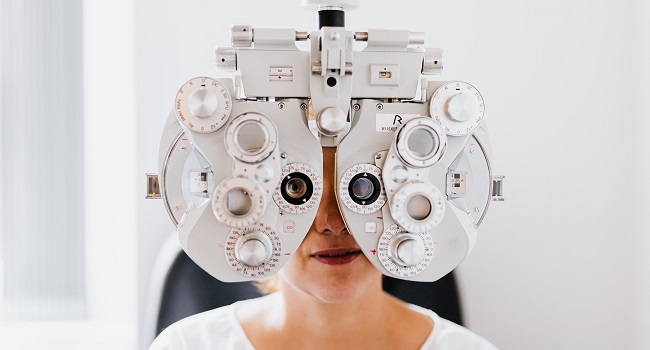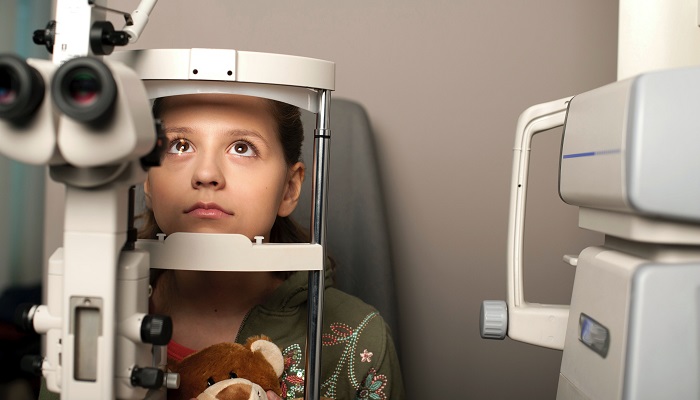The rise in vision issues is becoming a growing cause for concern in society. Roughly, there are 33 million people with blindness and 260 million with moderate-to-severe vision impairment. According to the International Agency for the Prevention of Blindness, out of the total % of global blindness and vision impairment cases worldwide, 77% are completely preventable or still treatable. With this increasing prevalence, the demand for more nuanced optical healthcare is rising. Traditional methods of diagnosing and treating vision problems are not always sufficient in addressing the complexities of these conditions. Thankfully, 3D eye scans are showing promise in providing more accurate and comprehensive optical care.
The need for more advanced eye testing due to a rise in vision issues

As mentioned above, many of the population suffer from vision issues. One of the primary reasons for the rise in vision problems is the lifestyle changes that have occurred in modern society. The widespread use of digital devices has resulted in prolonged periods of screen time, leading to an increased incidence of myopia due to eye strain. Moreover, the shift towards a more sedentary lifestyle has also contributed to developing vision problems, as the eyes are more likely to be exhausted.
Aging has also had a significant impact on the rise in vision problems. Macular degeneration, cataracts, and other age-related vision conditions have become more prevalent as life expectancies lengthen. With the aging population, there is an increased need for advanced eye testing to detect and manage these conditions early on to prevent further deterioration of vision.
The need for more advanced eye testing is also highlighted by the limitations of current testing methods. Traditional eye tests have their shortcomings. For example, the Snellen chart is limited in scope and may not accurately assess visual acuity in individuals with refractive errors such as astigmatism and presbyopia. These conditions can cause visual distortions and difficulty focusing on specific objects, which may not be fully captured by the chart.
Additionally, the autorefractor may fail to provide accurate results for patients with certain eye conditions, such as keratoconus or cataracts. In both of these conditions, the irregularities in the structure of the eye, namely the thin cornea and cloudly lens, can inhibit the autorefractor from providing an accurate assessment of the patient’s refractive error.
The current state of 3D eye scans and their benefits

As a result of these, healthcare experts are turning to more 3D scans for their more sensitive and well-rounded capabilities. 3D scans are similar to advanced medical imaging techniques, in which both produce three-dimensional images of the subject being scanned. This provides a more detailed representation of the object or organ, allowing for a more accurate assessment of its condition. Whether it’s a 3D scan of the eye to diagnose and monitor eye diseases or a CT scan to visualize internal structures of the body, the ability to capture three-dimensional images has vastly improved our understanding of the human body and its functions.
In line with this, vision care providers have begun to offer 3D eye scans. To illustrate, eyewear retailer OPSM now offers 3D eye scans alongside more orthodox eye tests in select stores. From Canberra in the Australian Capital Territory to Cairns in Queensland and to Melbourne Central in Victoria, clients can now simply book a visit to their local optical retailer online and have the scan performed during their regular eye test appointment. Similarly, many health establishments have started including 3D eye scans in their patient screenings. Such is the case in The Western Michigan University Vision Rehabilitation Clinic, where 3D scans are now part of routine vision consultations.
Adopting 3D eye scans has led to more precise diagnoses and treatment plans. With a clearer understanding of the eye’s structure and pathology, ophthalmologists can tailor their treatment approaches to the specific needs of each patient. This personalized approach has resulted in better outcomes for patients with a wide range of eye conditions, including glaucoma, macular degeneration, and diabetic retinopathy.
Another significant benefit of 3D eye scans is their potential to aid in early disease detection and monitoring. By capturing detailed eye images, these scans can help identify subtle changes in the eye’s structure that may indicate the early stages of ocular diseases. This early detection can be crucial in preserving patients’ vision, allowing for prompt intervention and management of these conditions.
In conclusion
Overall, while not yet fully commonplace, 3D eye scans are a promising addition to the field of ophthalmology. With its advanced capabilities, this testing method may significantly help against preventable vision issues.


















